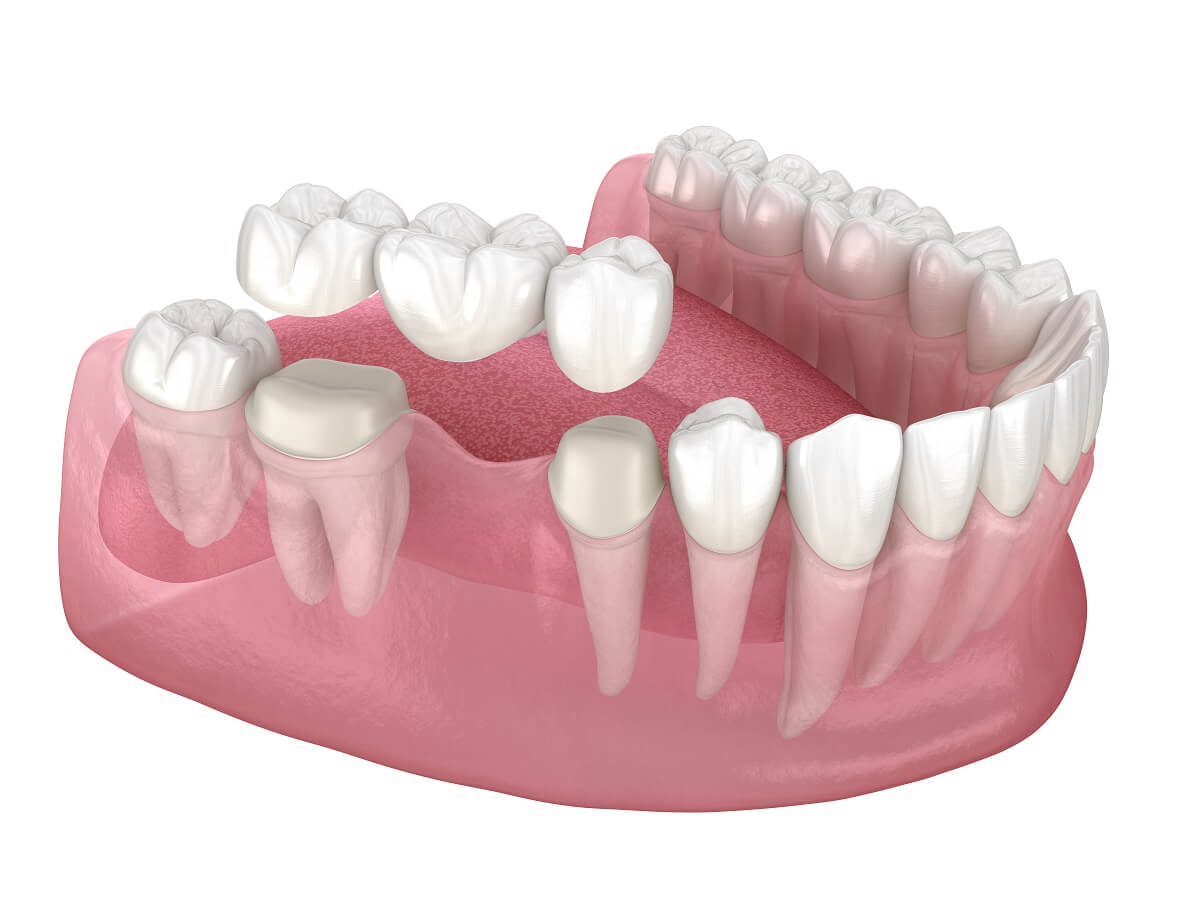We all know the importance of caring for our teeth, but what happens when one or more teeth are missing? Leaving gaps can compromise function, appearance, and long-term oral health. Dental bridges offer an effective solution for replacing missing teeth by bridging the gap. But when exactly does a bridge become necessary? Knowing the signs can help patients and their dentist determine if a dental bridge is the proper treatment.
What is a Dental Bridge?
A dental bridge is a fixed restoration that spans the space created by one or more missing teeth. It is cemented or bonded onto the natural teeth or dental implants surrounding the space.
A bridge consists of:
- Retainer crowns – the caps placed on the tooth or implant abutments on either side of the gap
- Pontics – the artificial tooth/teeth that fill in the gap(s) between the retainers
Bridges aim to restore proper functions like chewing and speaking abilities, maintain bone and soft tissue health around the gap, and improve oral aesthetics. Materials may include porcelain, metal alloys, or combinations of both for strength and natural appearance.
Typical Signs Missing Teeth Create Problems
Certain issues arise from tooth loss without a bridge that can guide the decision whether replacement becomes necessary, such as:
- Adjacent teeth shifting into the space from lack of contact and support
- Excessive pressure on remaining teeth causing pain or accelerated wear over time
- Decreased ability to thoroughly clean the area and increased risk of decay near the gap
- Altered facial structure and smile line over multiple missing teeth impact appearance
- Difficulty chewing or biting foods comfortably
- Speaking or pronouncing certain words less clearly
- Potential bone loss where teeth are absent if not restored
A thorough dental exam by your dentist assessing these signs helps determine if dental bridgework makes sense. Some problems merit addressing sooner rather than later.
Priorities for Replacing Missing Teeth
Certain tooth positions rank higher priorities for bridges when absent based on significance to functions like:
- Front teeth, where visibility and speech clarity matter greatly
- Molar teeth are important for chewing and grinding food thoroughly
- Teeth in segmented dental arches at risk for shifting alignments
- More than one missing tooth in a row poses oral welfare concerns
Cosmetic issues alone may wait if other signs remain manageable, but missing teeth impacting airway, diet or dental arch integrity often require timely replacement. Your dentist can judge severity on a case-by-case basis.
Evaluating Treatment Options
When missing teeth indeed present issues, the dentist must consider various options for replacing them, such as:
- Removable partial dentures – less expensive but less durable and have lower retention rates over time
- Single dental implants – excellent aesthetics and retention but higher initial costs than bridges
- Fixed dental bridges – provide many benefits at reasonable costs versus implants
Factors like jawbone health, alignment, occlusion, number of missing teeth, and costs/insurance coverage help determine the most suitable alternative. Bridges offer benefits for multiple missing teeth replacement in many situations.
The Dental Bridge Procedure
If agreed bridges represent the best choice after examination, your dentist will likely:
- Prepare retainers on the existing teeth surrounding the gaps through proper shaping and cleaning
- Make moulds and impressions to design the custom bridge in a dental lab
- Temporarily cement the bridge during a “try-in” for appropriate fit evaluation
- Bond or cement the permanent bridge in place
Numbness may occur during cementation but resolves. Retainers serve as anchors, fusing the bridge solidly in place. Attention to hygiene around abutment teeth becomes essential in the long term.
Post-Procedure Care and Maintenance
To ensure a dental bridge functions optimally, it requires diligent home care and professional supervision, including:
- Using brushing aids and floss threaders to clean under and between the bridge thoroughly
- Scheduling regular dental cleanings and checkups, especially during the first year
- Monitoring all teeth and gums for any changes requiring prompt attention
- Only chewing on the politics and side surfaces to prevent excess stress on retainers
- Replacing bridges as needed due to damage or wear over 10-15 years average lifespan
Dental bridges deliver excellent restoration of lost tooth structures and appearances with proper care to improve chewing comfort, oral aesthetics, and long-term dental welfare. Patients benefit from understanding when missing teeth justify bridgework.
Count on SD Family Dentistry for Comprehensive Dental Exams and Restorative Solutions
At SD Family Dentistry, we comprehensively restore our patients’ smiles and oral functions. As this blog post outlines, dental bridges are an excellent treatment option for patients missing one or more teeth. They not only fill unsightly gaps but prevent issues like bone loss, shifting teeth, and chewing or cleaning difficulties that arise without replacement. Our skilled and experienced dentists take the time to thoroughly examine each patient’s individual needs to determine if a bridge is the right solution. In addition to bridges, we also offer other restorative services and treatments discussed. You can trust the team at SD Family Dentistry to carefully evaluate your dental needs and recommend the best treatment plan for replacing missing teeth.
We welcome you to contact our office to schedule a comprehensive exam and discuss your restorative options.




Leave A Comment